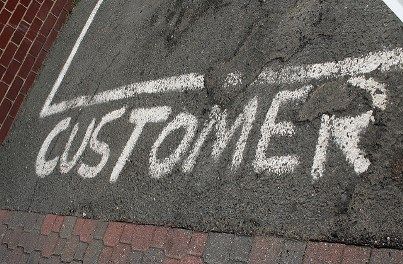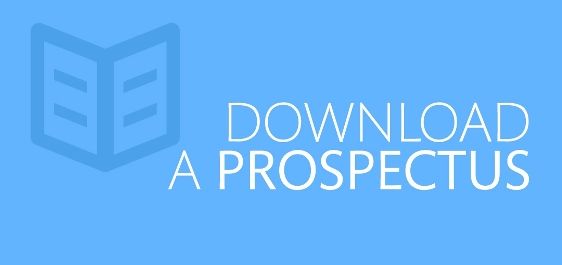Acronyms. HEIs, sorry, Higher Education Institutions love them. We’ve got AIDA, SEO, PPC, CPC, CTA, GA, CMS, HESM, CRM, B2B, B2C, UX, WOM …I could go on (check out HubSpot for even more!)
But here’s a new one for you. And it could be the difference between leading the competition or lagging behind it.
CX.
Yep, CX.
Customer Experience.
You’re probably thinking that you already have this sorted. You have a call centre operation that people can ring (but only during UK office hours), there’s an email address that prospects and current students can use to get in touch (but its only looked at during UK office hours), you monitor your social media for positive and negative sentiment (largely during UK office hours) and you have a CRM system that sends useful information to those that have joined your CRM funnel through an online form, or meeting you in person, e.g. at an Open Day (the emails from which are usually triggered by a human during UK office hours).
These activities are a start, but they are very much based around a reactive model of Customer Service rather than being a proactive approach to working through all the customer touchpoints (and I mean ‘customer’ in the very broadest sense) and making them as self-service, seamless and intuitive as possible.
Only when the leap is taken to move to Customer Experience Design, and away from Customer Service Management will both the organisation and the customer come out on top.
Organisational culture and brand and the effect on customers
So, moving away from a Customer Service model can’t be that difficult. It probably means adding on a few new processes and developing some extra customer touchpoints. Right? Wrong.
It requires a fundamental look at your organisation, starting with its culture.
It has been said by many, including the Harvard Business Review, that ‘your brand is your culture, your culture is your brand’.
They also make a clear link between success in the marketplace and how the workplace functions:
“You can’t be special, distinctive, and compelling in the marketplace unless you create something special, distinctive, and compelling in the workplace. How does your brand shape your culture? How does your culture bring your brand to life?”
Brand Is Culture, Culture Is Brand; Harvard Business Review
But what does this mean in practice?

Photo credit: https://www.flickr.com/photos/jeepersmedia/
We’ve all worked for large (or small) organisations who have, at some point, published a new corporate strategy. Often, values are laid down within that document that cites how an organisation’s people behave towards each other. But has this come from how the people really behave, or how the organisation wants them to behave? Either way, if these positive values aren’t espoused by the employees of the organisation, if employees are disengaged, if morale is low and behaviours are counter to these values, then the customer experience will suffer.
The culture of an organisation is how employees think, believe, and act, especially when no one is watching. If employees don’t believe in the vision and leadership of their organisation their actions will be opposed to what is required for a great customer experience. Where there is a bad customer experience there is also a missed opportunity to move customers on to being advocates – with the opposite being the case. These customers will talk ill of the organisation, and the reputation created through customer experiences will be opposed to the very culture that the organisation is attempting to foster.
And this is often where there is a disconnect. Branding is the domain of Marketing whereas Employee Engagement is the domain of HR and Culture tends to be set by the Senior Management Team. But the three are inextricably linked and the effect of one on the other shouldn’t be ignored.
Customers: what are they?
The word ‘customer’ is used to mean a lot of different things, and this is important. More traditionally, it refers to someone who buys good or services from another person or organisation. I like to think of it as any person who has some sort of transaction with another person or organisation to get something done, and this transaction might include knowledge, ideas, or information, rather than money.

Photo credit: https://www.flickr.com/photos/rachaelvoorhees/
Internal Customers
As such, colleagues within an organisation are often customers of each other – but this doesn’t tend to be how individual departments think, unless they are clearly a Service area, such as the canteen or the Students’ Union shop. Has anyone within your institution asked you how you go about your daily work; tried to find out what tasks you need to get done, how you usually carry them out, and whether the institutional systems, processes and procedures support you to carry out these tasks well, or whether you have created your own ‘Productivity Hacks’ to get you through the day, often avoiding the very processes and systems that have been designed (allegedly) for you? Thought not.
What about current students?
They have tons of tasks to carry out to successfully navigate their studies – but does responsibility for their experience have a clear owner? Sure, with the advent of league tables and increased competition in the HE market ‘the Student Experience’ is talked about at committee level and HEIs are investing in large Student Experience projects. But do these tackle the everyday ‘top tasks’ that students may need to carry out, either digitally or offline?
A friend of mine recently handed in his PhD thesis after many years of research whilst also having a full-time job. What should have been a moment of pure joy and celebration turned out to be somewhat farcical and exhausting as he was passed from pillar to post - different bits of his ‘top task’ (‘hand in PhD thesis’) had to be dealt with by different departments in different buildings, none of whom knew what the next bit of the process was after their bit was completed. If there was an agreed process, he couldn’t find it online, and even those involved in it didn’t know what it was. Each department had their own institutional targets (‘log thesis on spreadsheet’, ‘post to external examiner’, ‘collect fee from student’) all of which were completely detached from the other.
Hardly cause for celebration, just a stiff drink.

Photo credit: https://www.flickr.com/photos/smemon/
And how much of this happens daily? Staff and students wandering around the digital or physical campus as they’re not sure what they are supposed to be doing just to get through the day.
The same goes for external customers and prospects, and this is where the most damage can be done, or most opportunities are gained.
Prospects and external customers
A lot of work has been done throughout HE, over recent years, on engaging prospects through a Customer Relationship Management (CRM) approach – collecting details (data) from prospects (students, businesses, other stakeholders) and then that data is used to communicate with these prospects by giving them useful information, pertinent to where they are in their ‘customer journey’. A lot of HEIs now have teams dedicated to this function, often within the wider Marketing/Comms team, and CRM is seen as a key way of getting data into the ‘sales funnel’ to turn these leads into viable customers.
All well and good. But this is very institutionally-focussed. The organisation wants more data so that it can reach its targets, which may well get in the way of a good customer experience.
For example, one of the ‘top tasks’ for a prospective student will be to find out about the courses on offer. Often, they will want something to show to friends, or parents, or refer to offline (data plans, and all that) and where there is an option to ‘download a prospectus’ prospects will do this, rather than getting one posted out. As mentioned in the Calls To Action blog post the targets for the Sales/Recruitment team will cause the customer experience to be interrupted, as the prospective student is asked for their name and email address (at least) before they can get this download. The institution doesn’t need this data for this top task to be carried out – they have deliberately chosen to add this extra step in.

https://www.cornwall.ac.uk/about-us/download-prospectus
And this contrasts with what the world-leading gov.uk transformation project has been working towards. They have a very clear Service Design Manual and are building services that are Digital by Default; online services so good that people prefer to use them.
Their Design Principles are very clear; the first one states:
Start with user needs. Service design starts with identifying user needs. If you don’t know what the user needs are, you won’t build the right thing. Do research, analyse data, talk to users. Don’t make assumptions. Have empathy for users, and remember that what they ask for isn't always what they need.
And Google agrees. The first sentence of the Google design guide states, ‘Focus on the user and all else will follow’.
Getting to know our customers and their journeys
So, if we are to focus on the user we must first know who our customers (users) are and then understand what they want and need. We need to immerse ourselves in their lives, have empathy for them, and understand them through watching, observing, and getting feedback. Having a guess at what a 16-year-old student might want from a University website, based on what we needed when we were looking for a University, is no longer good enough (the internet didn’t even exist when I was looking!). Assuming we know how a new student books their place in halls of residence could be an assumption too far. Thinking we know how our colleagues undertake their daily tasks is potentially missing an opportunity to save the organisation time, money, and frustration.
“In order to be competitive, brands must get better not only at understanding and satisfying customers’ wants and needs but at anticipating them, even before customers know what they want and need. This type of experience design is referred to as creating proactive experiences, and these are quickly becoming the new standard.”
Brian Solis. X: The experience when business meets design
And Henry Ford understood this way before digital experiences were even thought about:
“If there is any one secret of success, it lies in the ability to get the other person’s point of view and see things from the person’s angle, as well as your own.”

Image credit: https://pixabay.com/en/automobiles-henry-ford-vintage-old-502135/
Personas and user stories
Web and digital experts are used to creating personas to group users together and represent key audiences. However, usability.gov reminds us that:
“…your personas are only as good as the research behind them.”
Personas need to be developed through research not guesswork, otherwise you might as well not bother.
Tom Fishburne, AKA Markatoonist, warns against ‘personality-driven’ personas. Creating a persona around the fact the users may like Game of Thrones isn’t very helpful. They need to be about how and why those groups do buy or are likely to buy.
User Stories have proved to be useful in the work I have done in the past. It has focussed website editors’ attention onto ‘top tasks’ and through this they have been able to make user-focussed, iterative changes to their website content or navigation which they simply hadn’t thought about before. The gov.uk Service Manual describes them: “User stories describe a user and the reason why they need to use the service you’re building.” And how to go about them can be found on the Service Manual website.
Digital designers need to get out and about into the lives of customers and see how they really use digital services. Gov.uk include observation in all of their research phases as do Google.
Mapping the Customer Experience
Once we know what they want and need, we can then map their customer journey across all touchpoints and channels, and ensure that everyone involved in this journey understands where the pain points might be in order to work together to optimise this journey through iterative developments and enhancements. Once we know the ‘as is’ journey we can develop the optimal ‘to be’ journey and make changes to bridge the gap. This is very akin to process mapping, or Business Process Architecture, where an organisation maps its business processes through a series of flowcharts to see where improvements can be made. Until the whole journey, or process, is understood by everyone, it is really difficult to make any user-oriented improvements. They will only ever be improvements to one department’s part.
But for true Customer Experience Design, Brian Solis recommends three types of Mapping in his book, X: The Experience When Business Meets Design.
Journey Maps – take a walk in the shoes of your customers. Map the ideal physical and digital pathway
Experience Maps – using the Adaptive Path framework take into account what people are doing, thinking and feeling throughout their experience
Experience flow – helps everyone understand the current customer experience and the one you want to create (a bit like the ‘as is’ ‘to be’ process mentioned earlier)
These together will help create an experience that goes beyond physical or digital touchpoints and resonates with the customer.
“Humans are emotional creatures and they want experiences that engage them as humans. They’re not eyeballs, impressions, views, likes, shares, clickthroughs, or conversions.”
Brian Solis: It’s About The Customer Experience; So, Why Is Your Brand Ignoring Customers?
To go back to the PhD thesis example, simple tweaks such as handing in and paying at the same place would vastly improve the customer experience.

Photo credit: https://pixabay.com/en/world-europe-map-connections-1264062/
Customer needs change
But this research-led iterative development isn’t a one-off. Customer needs change all the time, for all manner of reasons. A good example is the content about driving tests on the gov.uk site. Whilst the driving test itself may not have changed the way that people were using the content had. Users were looking for different search terms and the devices that they were accessing them on had changed also.
Analytics showed this change in behaviour, and so gov.uk could make iterative tweaks to the content to reflect these changes. You can read the full article here.
An interesting note is the amount of measuring being done and continuous, iterative changes that are being made.
“The GOV.UK content team tries to spend 20% of its time doing improvement work like this.”
Continuous improvement is key to maintaining a good customer experience, rather than big-bang, redesign projects.

Digital transformation is the key to successful CX Design
To be truly customer-focussed requires institutions to be joined up and have customer-oriented, rather than internal, targets to work towards. This can be difficult where plans and strategies are developed that have siloed targets based around internal departmental specialisms rather than external, user-oriented goals.
And this is where digital transformation comes in.
“The essence of digital transformation is about moving from organisation-centric to customer-centric.”
Gerry McGovern
No other initiative or investment is as customer-focussed as digital. It is disruptive enough to require institutions to fundamentally rethink how they operate and who they operate for. Organisations traditionally invest in current activities or innovate into new areas, but rarely does something come along that requires them to revaluate what they are doing and how they are doing it, for fear of losing out to those that are ahead of the curve.
Digital is self-service, is seamless, is ubiquitous – and, as such, is for the customer rather than the organisation.
In the absence of a digital transformation approach, big-bang ‘vanity’ projects will continue to be carried out at immense cost, the user-benefits of which probably aren’t understood, written down, or measured. They will be about jumping onto a ‘new system bandwagon’ rather than creating an excellent customer experience. The gov.uk transformation project is now five years old, and they recognise that digital transformation isn’t a one-off project:
“We know that digital transformation has no end point.”
And for organisations that have millennials as their current or prospective customers, this is a dangerous game to play.
“Companies that do not adapt (to millennial behaviour) risk obsolescence as this new generation becomes an economic powerhouse.”
Joe Gagnon and Jason Dorsey, 2015 survey of Millennials.
Organisations need to realise that younger generations define everything very differently to the ones that have gone before – they want every digital experience to be as good as that of their favourite app. They want instant gratification and to be able to find things rather than remember them. Their mobile device is their second brain.
Understanding these changing needs, developing a digital strategy, engaging employees, and iteratively developing excellent customer experiences, will enable organisations to break out of their navel-gazing habits, and really see things from a customer point of view.
‘As is’ ‘to be’ example: successful business process mapping
I was fortunate enough to be heavily involved in the JISC ‘Making the Most of Course Data’ Programme some years back. The Programme funded HEIs and FE colleges to improve their course data, not least through the exploration and adoption of XCRI and XCRI-CAP. At the time, I was the Web and Marketing Manager and so was responsible for getting course information into a format that was user-friendly, accurate, up to date and accessible for all, both online and in print, and to a strict deadline that matched the student decision-making journey. No mean feat, as anyone involved with publishing institutional course information will understand.
One of the most powerful outputs of the programme of work was an institutional model of all the different people, processes and systems involved in getting course information from an academic’s brain, via the Course Approval Process, and onto the website or into the prospectus. I knew how complex and time consuming this was, but no one else did! The prospectus was printed every year on time, and so it was assumed (from everyone outside of the Web and Marketing Teams!) that the process was seamless, correct information was always submitted on time, and a magical database of course information existed from where we got our information. None of the above was true. Nor was (is?) it in most HEIs as the JISC project was uncovering. This was the first time that everyone involved in the development and publication of course information had gathered together to see the process from start to finish.
But once everyone knew and understood this journey, a plan to make improvements was made almost immediately, and this had benefits for both the institution, and the customer who ended up with better course information in a timelier manner. Coming at it from a ‘top task’ perspective, one of my top tasks as the Web and Marketing Manager was to collate and publish institutional course information. Until everyone involved in that journey understood it, changes would never have been made, but once the pain points were understood, everyone was more than happy to play their part in making suggestions for improvements.
Author: Claire Gibbons, Digital, Marketing, Higher Education and Content Consultant.
https://twitter.com/PlanetClaire
Image Sources:
Customer parking space: https://www.flickr.com/photos/rachaelvoorhees/
Thesis writing: https://www.flickr.com/photos/smemon/
Download a prospectus: https://www.cornwall.ac.uk/about-us/download-prospectus
Henry Ford: https://pixabay.com/en/automobiles-henry-ford-vintage-old-502135/
Map: https://pixabay.com/en/world-europe-map-connections-1264062/
Mac and devices: https://pixabay.com/en/apple-imac-ipad-workplace-606761/
Lucky Brand jeans: https://www.flickr.com/photos/jeepersmedia/

:format()//media/CX-is-the-new-acronym-in-town-and-it-means-business_RQ.png)